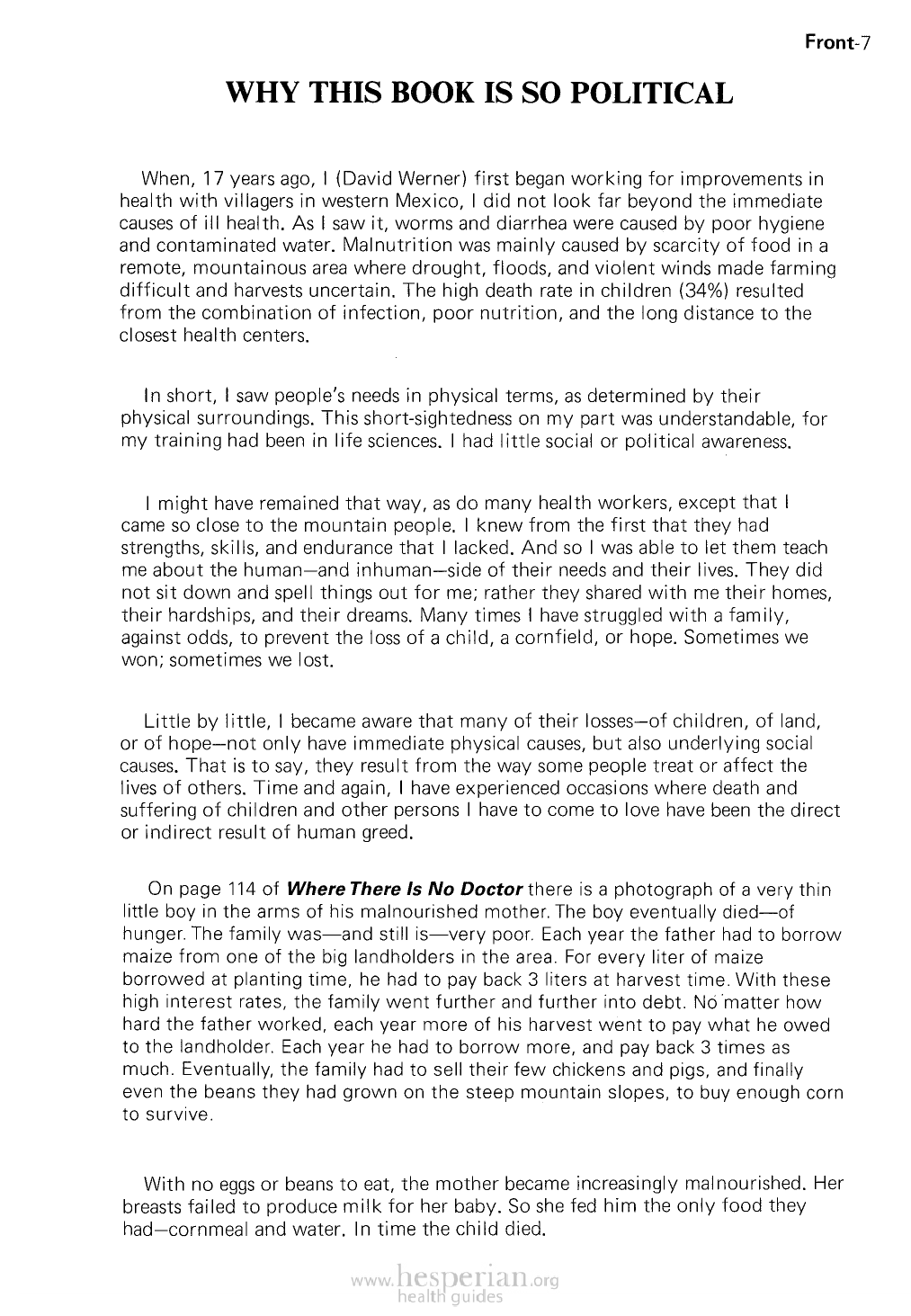
WHY THIS BOOK IS SO POLITICAL
Front-7
When, 17 years ago, I (David Werner) first began working for improvements in
health with villagers in western Mexico, I did not look far beyond the immediate
causes of ill health. As I saw it, worms and diarrhea were caused by poor hygiene
and contaminated water. Malnutrition was mainly caused by scarcity of food
in a remote, mountainous area where drought, floods, and violent winds made
farming difficult and harvests uncertain. The high death rate in children (34%)
resulted from the combination of infection, poor nutrition, and the long distance to
the closest health centers.
In short, I saw people’s needs in physical terms, as determined by their physical
surroundings. This short-sightedness on my part was understandable, for my
training had been in life sciences. I had little social or political awareness.
I might have remained that way, as do many health workers, except that I came
so close to the mountain people. I knew from the first that they had strengths,
skills, and endurance that I lacked. And so I was able to let them teach me about
the human—and inhuman—side of their needs and their lives. They did not sit
down and spell things out for me; rather they shared with me their homes, their
hardships, and their dreams. Many times I have struggled with a family, against
odds, to prevent the loss of a child, a cornfield, or hope. Sometimes we won;
sometimes we lost.
Little by little, I became aware that many of their losses—of children, of land,
or of hope—not only have immediate physical causes, but also underlying social
causes. That is to say, they result from the way some people treat or affect the
lives of others. Time and again, I have experienced occasions where death and
suffering of children and other persons I have to come to love have been the
direct or indirect result of human greed.
On page 114 of Where There Is No Doctor there is a photograph of a very thin
little boy in the arms of his malnourished mother. The boy eventually died—of
hunger. The family was—and still is—very poor. Each year the father had to
borrow maize from one of the big landholders in the area. For every liter of maize
borrowed at planting time, he had to pay back 3 liters at harvest time. With these
high interest rates, the family went further and further into debt. No matter how
hard the father worked, each year more of his harvest went to pay what he owed
to the landholder. Each year he had to borrow more, and pay back 3 times as
much. Eventually, the family had to sell their few chickens and pigs, and finally
even the beans they had grown on the steep mountain slopes, to buy enough
corn to survive.
With no eggs or beans to eat, the mother became increasingly malnourished.
Her breasts failed to produce milk for her baby. So she fed him the only food they
had—cornmeal and water. In time the child died.